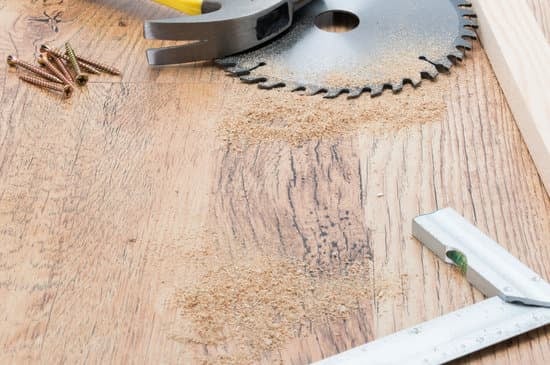Have you ever wondered how to improve your reflexes at home? Reflexes play a crucial role in our daily lives, whether it’s reacting quickly to catch a falling object or dodging an unexpected obstacle. In this article, we will delve into the importance of reflexes and explore ways to enhance them from the comfort of your own home.
Reflexes are essentially automatic responses that occur in our bodies in reaction to stimuli. They enable us to act swiftly and efficiently without conscious thought. From simple actions like blinking when something approaches our eyes to more complex movements like catching a ball, sharp reflexes are essential for our overall well-being and safety.
Having sharp reflexes not only helps us navigate potential dangers but also improves our performance in various activities, such as sports, driving, and even everyday tasks. Quick reflexes can make a significant difference in critical situations, allowing us to make split-second decisions that could be life-saving. By understanding the significance of reflexes, we can appreciate the value of enhancing and maintaining them through targeted training and practices.
How Reflexes Work in the Body
Reflexes are an essential component of our body’s ability to react quickly to external stimuli, helping us navigate through various situations in our daily lives. When we think about reflexes, the first thing that comes to mind is often the classic knee-jerk reaction when a doctor taps our knee with a reflex hammer. However, reflex actions actually involve a complex process within the nervous system that enables rapid responses to potentially harmful or unexpected events.
The Role of Nervous System in Reflex Actions
The nervous system plays a crucial role in coordinating reflex actions throughout the body. When we encounter a stimulus, such as touching a hot surface or hearing a sudden loud noise, sensory receptors send signals through sensory neurons to the spinal cord and brain stem.
In response, motor neurons transmit signals back from the spinal cord or brain stem to our muscles or glands, triggering an appropriate reaction without conscious thought. This process allows for rapid responses that can help protect us from harm or aid in performing tasks efficiently.
Neural Pathways and Synaptic Transmission
Within the nervous system, reflex actions are facilitated by neural pathways that connect sensory and motor neurons. These pathways create synapses, which are points of communication where neurotransmitters carry signals between neurons. The speed and efficiency of these synaptic transmissions play a crucial role in how quickly we can react to stimuli. By engaging in activities that strengthen these neural connections, such as physical and mental exercises, we can improve the speed and accuracy of our reflex responses over time.
By understanding the intricate workings of reflex actions within the body, individuals can appreciate the importance of maintaining sharp reflexes for their overall well-being and safety. Through targeted exercises, proper nutrition, and technology-assisted training methods, one can enhance their reflex response times and enjoy the benefits of improved coordination and agility in everyday life.
Benefits of Having Sharp Reflexes
Reflexes play a crucial role in our everyday lives, allowing us to react quickly to various stimuli, both conscious and subconscious. Having sharp reflexes can make a significant difference in situations where split-second decisions can mean the difference between safety and danger. Whether it’s catching a falling object or avoiding a potential accident, having quick reflexes is essential for overall well-being.
Enhanced Safety and Injury Prevention
One of the key benefits of having sharp reflexes is the ability to quickly respond to unexpected situations, thereby reducing the risk of injuries. For example, being able to swiftly dodge an oncoming object or quickly change direction to avoid a fall can prevent accidents from occurring. This can be particularly important in activities such as sports or driving, where quick reactions are essential for safety.
Improved Athletic Performance
Athletes rely heavily on their reflexes to excel in their respective sports. Quick reflexes translate to faster reaction times on the field, court, or track, giving athletes a competitive edge. By improving your reflex response time, you can enhance your agility, coordination, and overall athletic performance. This can result in better outcomes in sports competitions and better overall physical fitness levels.
Increased Cognitive Function
Sharp reflexes are closely linked to cognitive function and mental acuity. By training your reflexes, you are also challenging your brain to process information more quickly and efficiently. This can lead to improved focus, concentration, and decision-making abilities in various aspects of life. Additionally, studies have shown that individuals with sharp reflexes may experience improved memory retention and cognitive flexibility over time.
Common Factors That Can Lead to Slow Reflexes
When it comes to reflexes, there are several common factors that can contribute to slower response times. Understanding these factors can help individuals take proactive steps to improve their reflexes at home. Some of the main elements that may lead to slow reflexes include:
- Lack of physical activity: Engaging in regular exercise helps improve overall coordination and reflex speed.
- Poor nutrition: A diet lacking in essential nutrients may have a negative impact on brain function and reaction time.
- Sleep deprivation: Not getting enough rest can impair cognitive function, including reflexes.
To combat these factors and enhance your reflex response time, it is essential to address them proactively. By making simple lifestyle changes, you can significantly improve your reflexes at home.
How to Improve Your Reflexes at Home
Improving your reflexes at home doesn’t have to be complicated. There are various exercises and activities you can do in the comfort of your own space to boost your reflex response time. Here are some effective ways:
- Jump rope: Jumping rope is an excellent cardiovascular exercise that also helps improve coordination and agility, key components of sharp reflexes.
- Balance exercises: Standing on one leg or using a balance board can help enhance proprioception, which is crucial for quick reflex responses.
- Reaction ball drills: Using a reaction ball against a wall or with a partner can train your brain to react quickly to unpredictable movements.
Incorporating these physical exercises into your daily routine along with maintaining a healthy diet and adequate rest can go a long way in improving your reflexes at home. Combined with mental exercises and technology-assisted training, you’ll soon notice a significant difference in your reflex response time.
Physical Exercises to Improve Reflexes at Home
When it comes to improving your reflexes, physical exercises play a crucial role in enhancing your body’s response time. These exercises not only help sharpen your reflexes but also contribute to overall physical fitness. Here are some effective physical exercises that you can incorporate into your daily routine to boost your reflexes:
- Cardiovascular workouts: Engaging in activities such as running, cycling, or jumping rope can help improve both cardiovascular health and reflexes. These activities require quick decision-making and rapid movements, which can help train your body to react faster.
- Agility drills: Exercises like ladder drills, cone drills, and shuttle runs can enhance agility and coordination, leading to improved reflex response time. These drills focus on changing direction quickly and reacting promptly to visual or auditory cues.
- Balance exercises: Strengthening your balance through exercises like yoga poses, single-leg stands, or stability ball routines can improve proprioception and neuromuscular control, essential for swift reflex actions.
Incorporating these physical exercises into your daily workout regimen can significantly impact the sharpness of your reflexes over time. Consistency is key when it comes to reaping the benefits of these exercises. Remember to start slowly, gradually increase intensity, and always listen to your body to prevent injuries.
- Regular stretching: Flexibility plays a crucial role in maintaining optimal reflex function. Include dynamic stretches before exercise sessions and static stretches post-workout to improve muscle elasticity and joint range of motion.
- Plyometric training: Jumping exercises such as box jumps, squat jumps, or depth jumps can enhance fast-twitch muscle fibers’ activation, improving explosive power and reactive abilities.
- Reaction ball drills: Using a reaction ball for drills like throwing against a wall and catching the unpredictable bounce can challenge hand-eye coordination and reaction time, ultimately refining reflex responses.
By incorporating a variety of physical exercises that target different aspects of fitness into your routine regularly, you can effectively improve your reflexes at home. Remember to stay committed and patient as progress may take time but will undoubtedly pay off in the long run.
Mental Exercises to Boost Reflex Response Time
In addition to physical exercises, mental exercises are also crucial in improving reflex response time. One effective way to boost your reflexes at home is by engaging in activities that challenge your brain and reaction abilities. Playing brain games such as Sudoku, crossword puzzles, or memory games can help sharpen your cognitive skills and enhance your reflexes. These activities encourage quick thinking and decision-making, which are essential components of fast reflex responses.
Another mental exercise to consider for enhancing reflex response time is meditation. By practicing mindfulness and focusing on the present moment, you can improve your concentration and mental clarity. This heightened awareness can translate into faster reactions when faced with unexpected situations that require quick reflexes. Incorporating just a few minutes of meditation into your daily routine can have a significant impact on your overall cognitive function and reflex abilities.
Furthermore, visualization techniques can also be beneficial in boosting reflex response time. By imagining various scenarios that require quick reactions, you can mentally prepare yourself for different situations in real life. Visualization helps train your brain to react swiftly and accurately when faced with similar circumstances. By incorporating visualization exercises into your daily routine, you can effectively improve your reflexes at home while enhancing your overall mental acuity and cognitive performance.
Nutrition and Supplements That Support Reflex Enhancement
Proper nutrition plays a crucial role in improving reflexes as it provides the essential nutrients needed for optimal body function. Consuming a well-balanced diet rich in vitamins, minerals, and antioxidants can support the nervous system, which is responsible for transmitting signals rapidly for quick reflex actions. Including foods such as leafy greens, fatty fish high in Omega-3 fatty acids, nuts, seeds, and whole grains can aid in enhancing reflex response time.
In addition to a healthy diet, certain supplements can also support reflex enhancement. Vitamin B complex is known to help maintain nerve health and function, which is vital for quick reflex actions. Omega-3 fatty acid supplements can reduce inflammation in the body and improve cognitive function, contributing to better reflexes. Moreover, incorporating magnesium supplements can aid in muscle relaxation and nerve function, further boosting reflex speed and accuracy.
Adequate hydration is another important factor in supporting fast reflexes. Dehydration can lead to slower cognitive processing and reaction times, impacting overall reflex performance. Drinking plenty of water throughout the day helps maintain proper brain function and allows signals to be transmitted quickly between the brain and muscles. Combined with a nutrient-rich diet and suitable supplements, staying hydrated is key to improving reflexes at home.
| Nutrient | Food Source |
|---|---|
| Vitamin B Complex | Leafy greens, poultry, eggs |
| Omega-3 Fatty Acids | Fatty fish (salmon, mackerel), flaxseeds |
| Magnesium | Almonds, spinach, peanuts |
Technology and Apps for Reflex Training
In today’s digital age, technology has revolutionized various aspects of our lives, including how we can improve our reflexes right from the comfort of our own homes. There are a plethora of apps and tools available that are specifically designed to help enhance reflex response time and coordination. These technological aids not only make the training process more engaging but also provide real-time feedback on performance, making it easier to track progress over time.
One popular option for reflex training is virtual reality (VR) technology. VR games and simulations can challenge your reflexes in a fun and interactive way, helping you sharpen your response time in different scenarios. These immersive experiences can mimic real-life situations, making them an effective tool for improving reflexes while enjoying a game-like environment.
Additionally, there are specialized apps and devices that offer specific exercises aimed at enhancing reflexes. These apps often include quick reaction games, hand-eye coordination tasks, and other challenges that target different aspects of reflexes. By incorporating these tools into your daily routine, you can engage in consistent practice to boost your reflex abilities effectively.
Overall, utilizing technology and apps for reflex training provides a convenient and accessible way to work on improving your reflexes at home. By taking advantage of these resources, you can make the most out of your training sessions and see noticeable improvements in your reaction speed and overall coordination over time.
Incorporating Reflex Improvement Into Daily Routines
Firstly, consider incorporating simple physical exercises into your daily routine that specifically target reflex development. Activities like jumping jacks, quick sprints, or even playing catch with a friend or family member can help sharpen your body’s response time. These exercises not only improve muscle memory but also stimulate neural pathways that are crucial for fast reflex actions.
In addition to physical exercises, mental exercises are equally important in enhancing reflex response time. Simple activities such as brain teasers, puzzles, or even video games can help challenge and improve cognitive functions that directly impact reflexes. Engaging in these activities regularly can help keep your mind sharp and ready to react swiftly to any situation.
Furthermore, incorporating healthy habits such as proper nutrition and sufficient rest into your daily routine can significantly support reflex enhancement. A balanced diet rich in essential nutrients such as vitamins B12, D, and omega-3 fatty acids can help maintain optimal brain function and nerve signaling – key components for quick reflex actions. Additionally, ensuring you get an adequate amount of quality sleep each night allows your body to repair and rejuvenate, further improving overall cognitive function and responsiveness.
| Activity | Impact |
|---|---|
| Physical exercises | Enhances muscle memory and neural pathways |
| Mental exercises | Improves cognitive functions that affect reflexes |
| Healthy habits | Supports optimal brain function for quick reflex actions |
By implementing these strategies into your daily routines consistently, you can effectively enhance your reflexes without needing a dedicated training session. Remember that practice makes perfect when it comes to reflex improvement, so stay committed to these lifestyle changes for long-term benefits in agility and reaction time.
Tracking Progress and Measuring Success in Reflex Enhancement Processes
In conclusion, improving your reflexes at home is not only beneficial for daily activities but also for overall well-being. By understanding the importance of reflexes in everyday life and how they work in the body, individuals can appreciate the significance of enhancing this essential skill.
There are various ways to boost reflex response time, including physical exercises, mental exercises, proper nutrition, and utilizing technology and apps for reflex training. By incorporating these practices into daily routines, individuals can gradually see improvements in their reflexes over time.
It is essential to track progress and measure success in reflex enhancement processes to stay motivated and continue striving for improvement. Whether it’s through monitoring reaction times during specific exercises or observing improved coordination in everyday tasks, taking note of these changes can help individuals stay on track with their goals of sharpening their reflexes.
In essence, by consistently practicing and implementing strategies on how to improve your reflexes at home, individuals can enhance their overall cognitive function and physical performance.
Frequently Asked Questions
How Can I Improve My Reflexes Naturally?
Improving reflexes naturally can be achieved through regular physical activity, such as playing sports or engaging in activities that require quick reactions. Additionally, getting an adequate amount of sleep and maintaining a healthy diet can help enhance reflexes.
Can Human Reflexes Be Improved?
Human reflexes can definitely be improved with practice and training. By consistently engaging in activities that challenge your reaction time, such as martial arts or playing certain video games, you can sharpen your reflexes over time. This improvement is largely due to the brain’s ability to adapt and learn from repeated stimuli.
What Exercises Improve Reflexes?
There are various exercises that can help improve reflexes, including agility drills, hand-eye coordination activities, and balance exercises. For example, working with a reaction ball or using a speed ladder can train your body to react quicker to stimuli. Additionally, activities like boxing or dancing can also enhance reflex response by requiring quick movements and coordination.

I’m thrilled to have you here as a part of the Remodeling Top community. This is where my journey as an architect and remodeling enthusiast intersects with your passion for transforming houses into dream homes.





